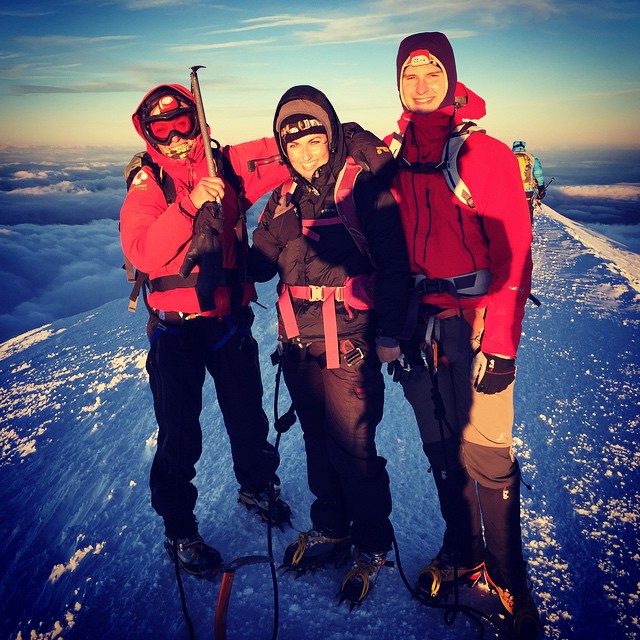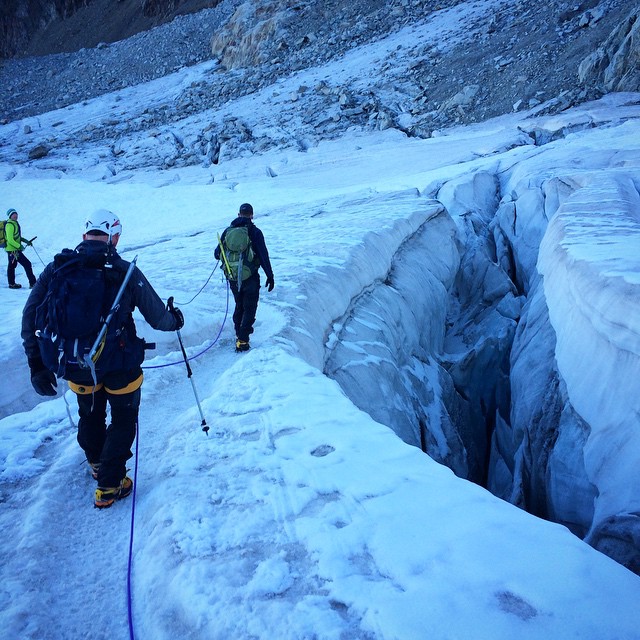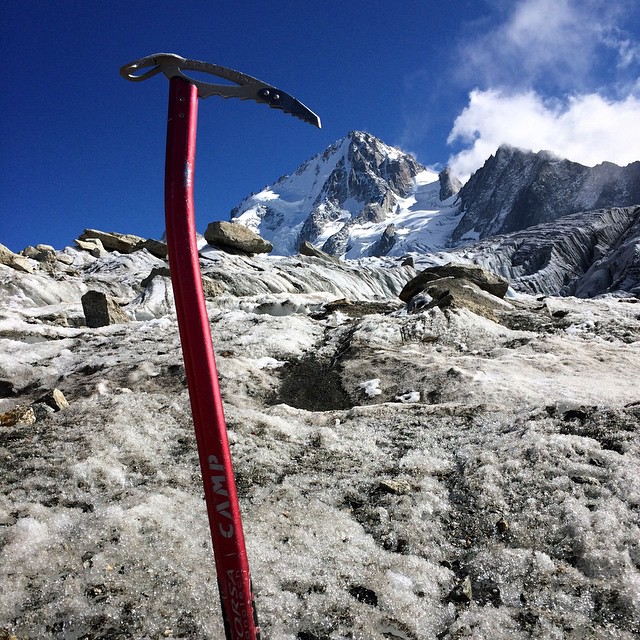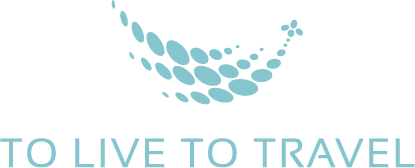Mont Blanc: France



General Information
Height:15,781 ft
Best Time To Climb: Mid June until Mid September
Length of Time to Climb: For acclimatisation purposes, it is preferable to have 3-5 days to climb if starting from sea level.
Permits Required: A permit is now required if climbing without a guide and shelter booking is mandatory. If you are found climbing the mountain without one of these, you can be fined up to $335,000
Accomodation: There are many hotel options in Chamonix-Mont-Blanc.
Overview
At 15,781 ft, mount blanc is the second highest peak in the Crown of Europe. Although, the exact height of the mountain varies from year to year, due to the amount of snow that is covering the surface at any given time. The mountain is located in the French Alps, alongside the Italian border.
Jacque Balmat and Michel Paccard were the first people (recorded) to ascent the mountain. One of the most infamous ascents was that of a Swiss mountaineer who ascended and descended the mountain in an incredible 5 hours.
The mountain draws a lot of tourism, with 20,000 climbers ascending the mountain each year. Unfortunately, not all of those climbers are prepared for the difficult challenge that awaits them (15 people died on the mountain last year). On top of that, waste and trash has become a problem, with people not disposing of this properly on the mountain.
It takes several days to reach the summit (approximately 3-5 days) due to acclimatisation and climbers will also have to prove that they have relevant accommodation booked on the mountain. These rules are for their own safety.
How to get there
Mont Blanc is accessible and can be reached by either road, train or plane. There are a few airports that are within access of the mountain, including Geneva, Lyon, or Haute-Savoie Mont Blanc Airport. Geneva is the closest, just under 90km away. From either of these airports, I would recommend booking a driver.
If you are from the UK you can catch a Eurostar from London directly to Chamonix Mont Blanc.
The Route
The Gouter Hut Route is the most popular route when climbing Mont Blanc. If you are looking to take this route, remember to book the Gouter Refuge in advance (you have to book online).
Begin the route by taking the Bellevue cable car from Les Houches, followed by the Tramway du Mont Blanc to the Nid d’Aigle. Once you reach this point, your hike will begin with around 5 hours of walking, before you reach your first point; the Gouter refuge, sitting at 3,817m.
The first part of this climb is along a well paved path, making for an easy route. You will reach the ‘Tête Rousse’ refuge and cross the ‘Grand Couloir’ – please note at this point there is often rock-fall. The remaining 550m from here before you reach the Gouter hut is more difficult, which a lot of scrambling involved. You will then spend the night in the hut.
Following the route from the Gouter hut, you will need crampons, harnesses and ropes due to the glaciated terrain. However, most of the terrain is not too steep; just difficult.
You will reach the Vallot shelter (an emergency bivouac). From here you will cross the Bosses ridge. It’s important to remember this is an exposed ridge where you will need good crampon technique for safety purposes. The route in total will take around 4.5 hours to reach the summit.
What to pack
It is important you pack the necessary equipment to make the climb as easy and comfortable as possible. Please find our recommended kit-list below.
Clothing
- Hiking Socks
- Gaitors
- Double Boots/HikingBoots
- Comfortable Underwear
- Base Layer (Bottoms and Tops)
- Midlayer Top (Hoodies/Jackets)
- Softshell Jacket
- Softshell Pants
- Hardshell Pants
- Hardshell Jacket
- Insulated Jacket
- Lightwear Gloves
- Insulated Mits
- Wool/Synthetic Hat
- Sunhat
Gear
- Water Bottle
- Ice Axe
- Waist Lease
- Crampons
- Trekking Poles
- Backpack
- Headlamp
- Goggles
- Sun Glasses
- UV Buff
Additional
- Power Adaptor
- Camera
- Toiletry Bag
- ‘Travel Clothes’ e.g. clean clothing that can be worn on ‘travel’ days
- Ear Plugs for more comfortable sleep in the huts
- Sun Protection (Sunscreen and Lip Screen)
- Snacks and Drinks
- Small First Aid Kit
Current Weather
Visit Mountain Forecast to see an in-depth weather map.
